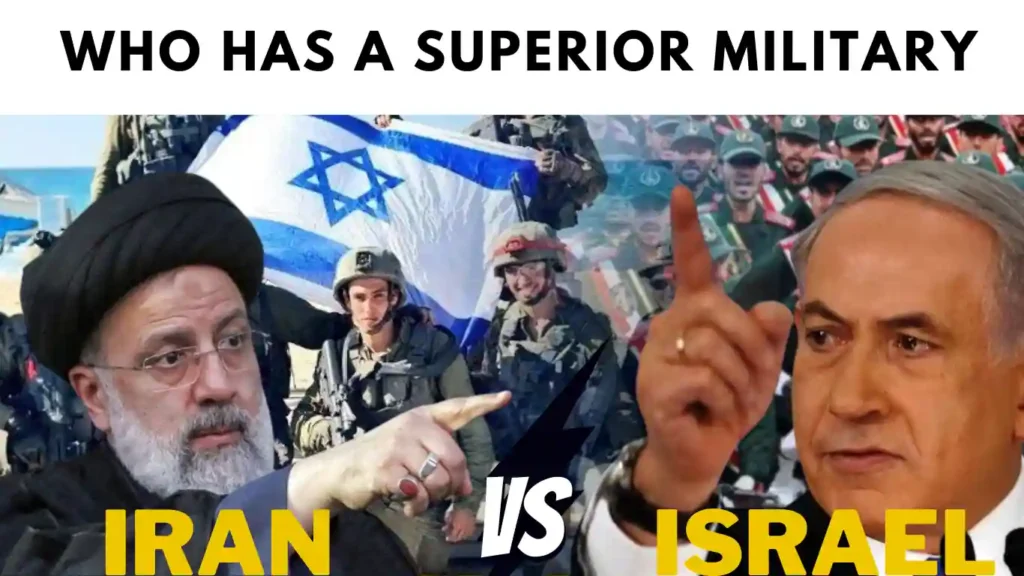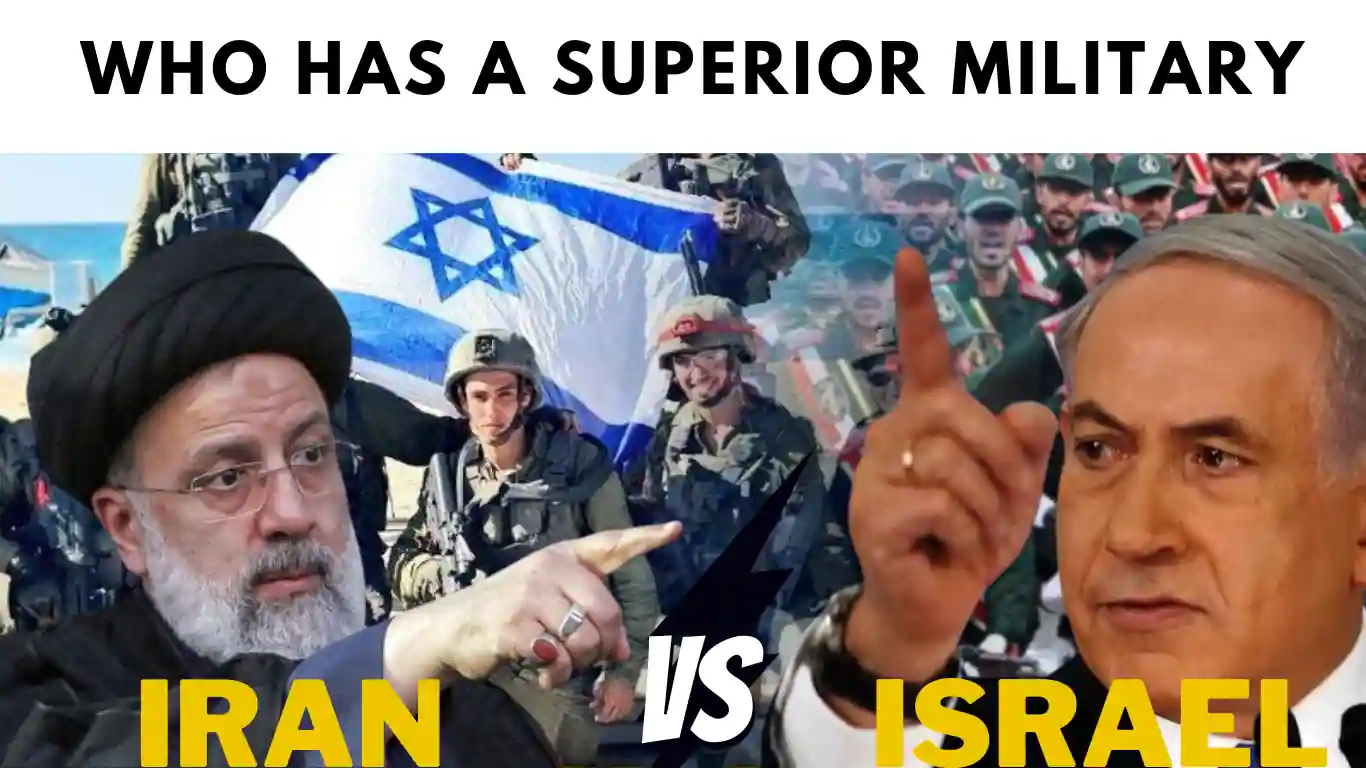Israel fights back against focal Iran, heightening strains. Concerns emerge over more extensive struggle in the unpredictable Center East district. Israel has trend setting innovation and Western help, while Iran centers around amount and local impact.

In the complicated domain of international elements, scarcely any locales are as loaded with pressure and verifiable hostilities as the Center East. Among the central participants in this perplexing international dance are Iran and Israel, two countries with well established international interests and well established territorial contentions. As we dive into a relative examination of their tactical capacities and key stances, a nuanced comprehension of the elements arises.
Israel vs Iran Military Comparision
Total Population:
Iran 
Israel 
Available Manpower:
Iran 
Israel 
Fit-for-Service:
Iran 
Israel 
Military Personnel:
Active Personnel:
Iran 
Israel 
Reserve Personnel:
Iran 
Israel 
Paramilitary Forces:
Iran 
Israel 
Financials:
Defense Budget:
Iran 
Israel 
External Debt:
Iran 
Israel 
Foreign Reserve:
Iran 
Israel 
Airpower:
Total Aircraft:
Iran 
Israel 
Fighter Aircraft:
Iran 
Israel 
Attack Helicopter
Iran
Israel 
Land Power:
Tank Strength:
Iran 
Israel 
Armored Vehicles:
Iran 
Israel 
Self-Propelled Artillery:
Iran 
Israel 
Naval Power:
Fleet Strength:
Iran 
Israel 
Submarines:
Iran 
Israel 
Logistics:
Airports:
Iran 
Israel 
Merchant Marine:
Iran 
Israel 
Natural Resources:
Oil Production:
Iran 
Israel 
Population and Manpower:
Iran with a Population of 87.6 million, outperforms Israel’s 9.04 million. This segment contrast converts into a significant labor supply advantage for Iran, flaunting 49.05 million accessible people contrasted with Israel’s 3.8 million. As far as fit-for-administration faculty, Iran keeps a critical lead with 41.17 million, while Israel remains at 3.16 million.
Military Staff:
Iran’s dynamic military work force number 610,000, dwarfing Israel’s 170,000. Also, Iran’s save powers of 350,000 surpass Israel’s 465,000. The two countries keep up with paramilitary powers, with Iran’s 220,000 contrasted with Israel’s 35,000.
Financials:
While Israel’s protection spending plan of $24.4 billion is over two times that of Iran’s $9.95 billion, Iran displays more grounded monetary pointers regarding outside obligation and unfamiliar stores. Iran’s outer obligation remains at $8 billion, fundamentally lower than Israel’s $135 billion. Besides, Iran brags a significant unfamiliar save $127.15 billion contrasted with Israel’s $212.93 billion.
Airpower:
Israel holds a slight benefit in complete airplane, with 612 contrasted with Iran’s 551. Nonetheless, Iran’s ownership of 186 contender airplane is somewhat not as much as Israel’s 241. As far as assault helicopters, Israel keeps a benefit with 48 contrasted with Iran’s 13.
Land Power:
Iran outperforms Israel in tank strength, heavily clad vehicles, and self-moved cannons. With 1,996 tanks contrasted with Israel’s 1,370, 65,765 shielded vehicles contrasted with 43,407, and 580 self-pushed cannons contrasted with 650, Iran shows a critical land-based military capacity. Maritime Power: In maritime strength, Iran flaunts a bigger armada with 101 vessels contrasted with Israel’s 67. Furthermore, Iran’s 19 submarines surpass Israel’s 5, showing a more significant submerged presence.
Logistics:
Iran’s broad framework incorporates 319 air terminals and a significant vendor marine armada of 942 vessels, far unbelievable Israel’s 42 air terminals and 45 shipper marine vessels. Regular Assets: Iran’s critical oil creation of 3.45 million barrels each day highlights its financial influence in the district, while Israel depends on elective hotspots for its energy needs.
Conclusion:
In the perplexing international scene of the Center East, the tactical limits of Iran and Israel are pivotal elements for local strength. While Israel keeps up with subjective predominance in specific parts of its tactical weapons store and advantages from vigorous partnerships, Iran’s sheer size, labor supply, and vital profundity highlight its impressive presence. Notwithstanding, military could is only one part of their perplexing relationship, which is additionally affected by authentic complaints, philosophical differences, and international goals. As these two local powers explore their combative concurrence, the overall influence keeps on advancing, forming the future direction of the Center East.
